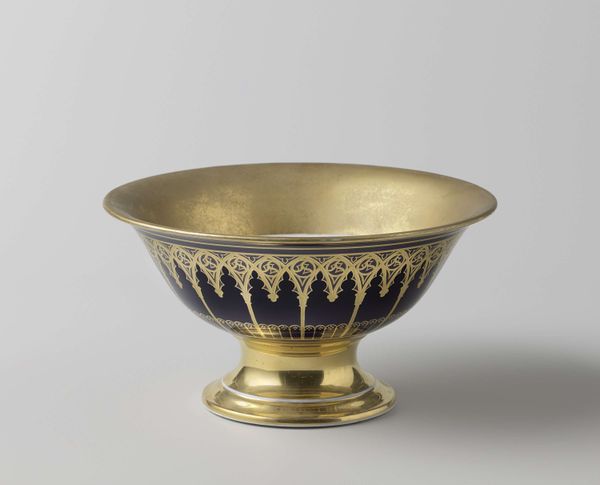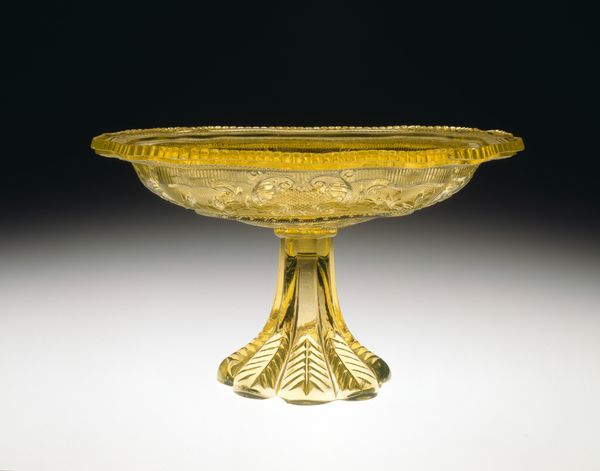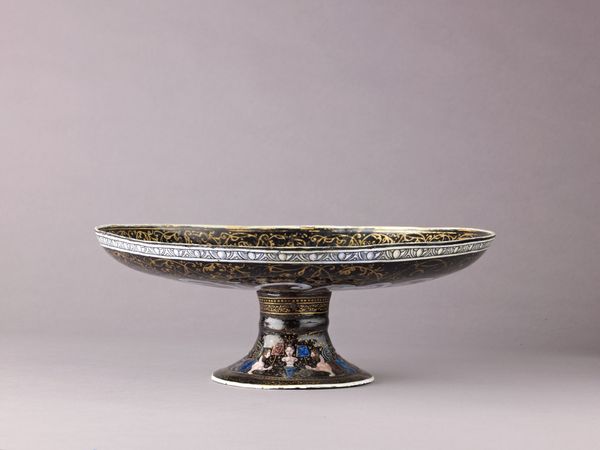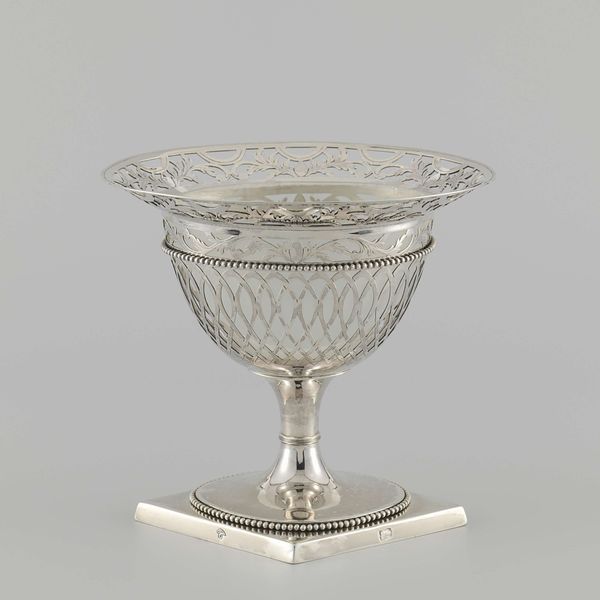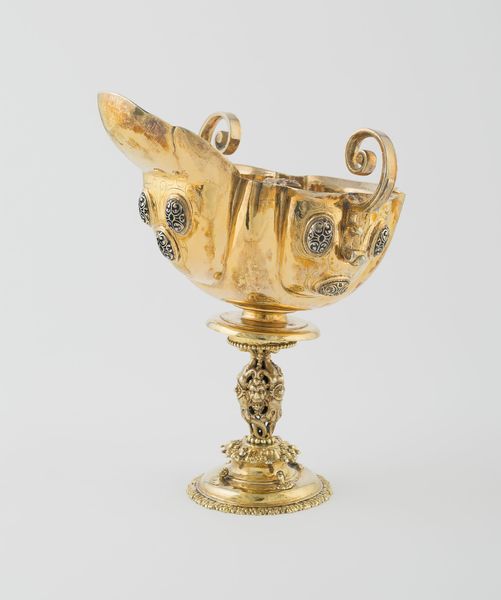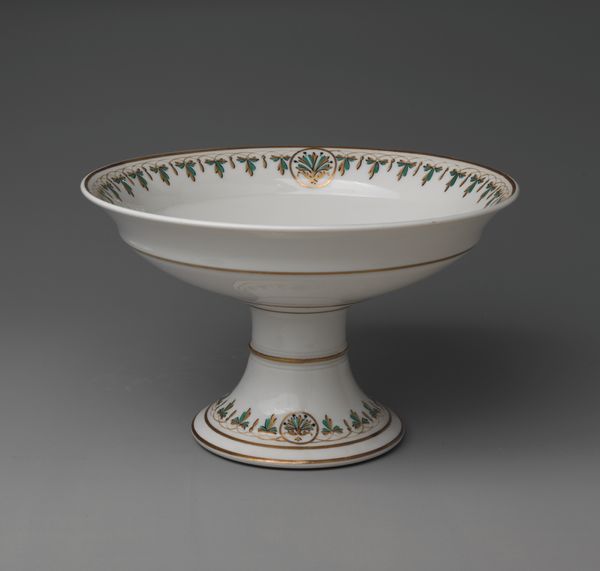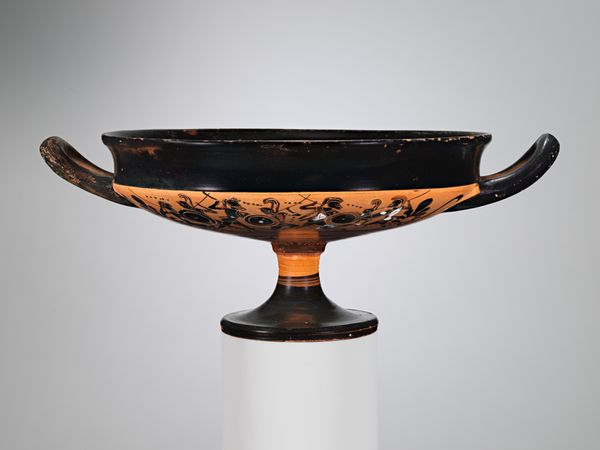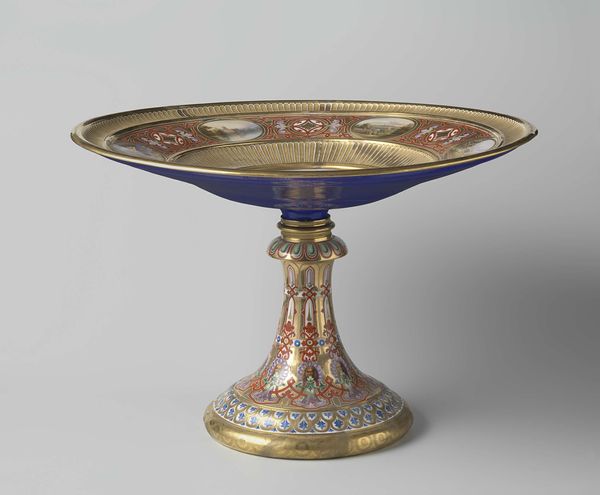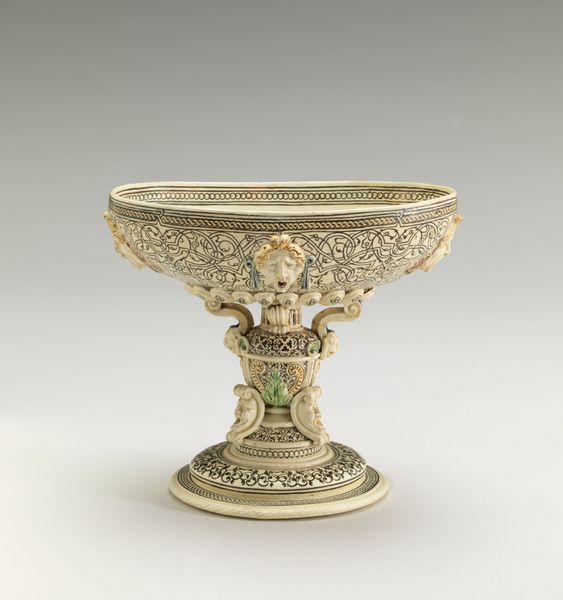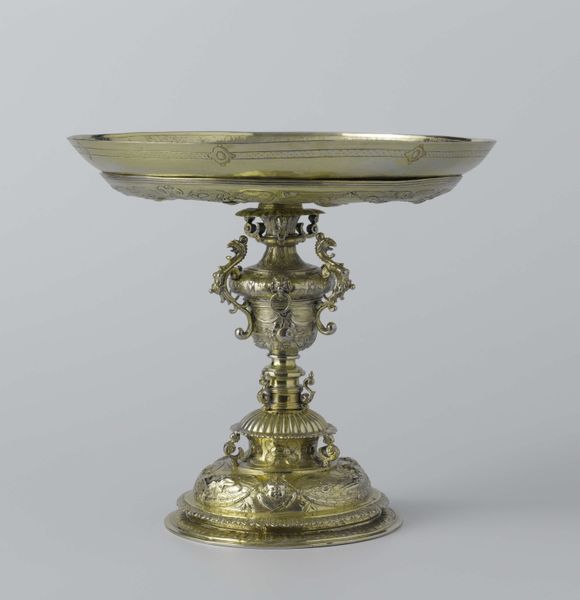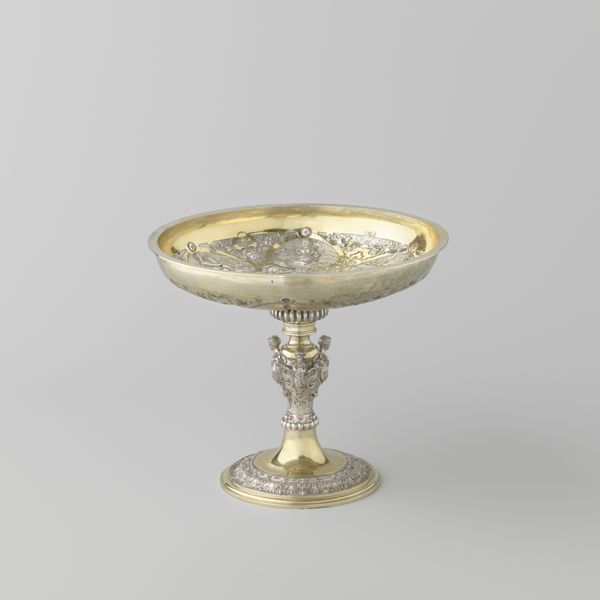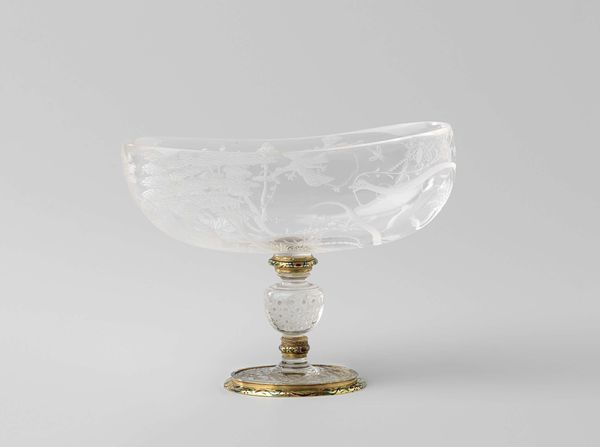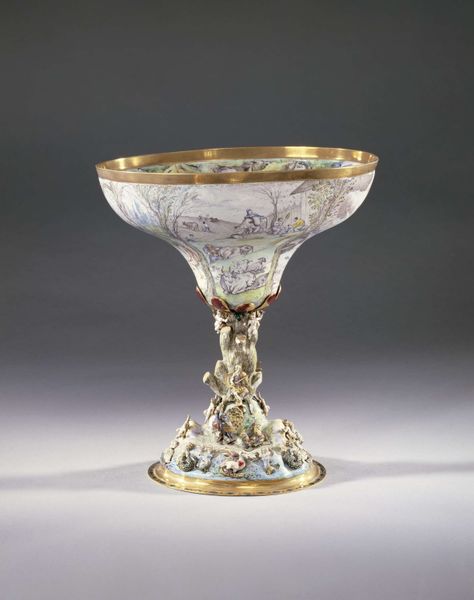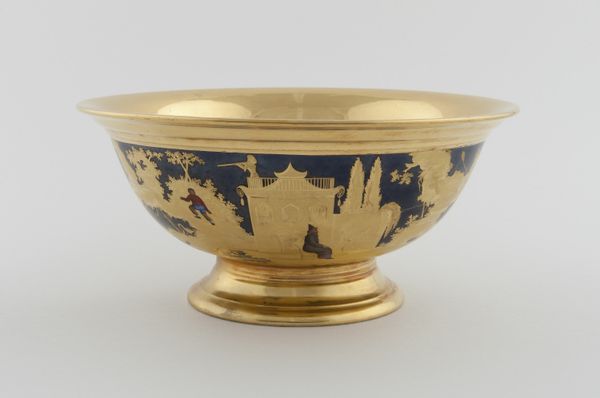
ceramic
#
ceramic
#
jewelry design
#
jewelry
#
ceramic
#
decorative-art
Dimensions: Diam. 5.4 cm (2 1/8 in.); 4.4 × 9.7 cm (1 3/4 × 3 3/16 in.); 6 × 9.3 × 7.7 cm (2 3/8 × 3 11/16 × 3 1/16 in.)
Copyright: Public Domain
Curator: Let’s take a look at this "Tazza," a ceramic piece from around 1850. What strikes you first? Editor: An immediate sense of precariousness, but also, undeniable opulence. The mottled bowl seems almost to swim above the elaborate base. It definitely brings into focus ideas around colonial trade of luxury objects, and how such "precious" things are really defined. Curator: Yes, the surface does evoke something primal; I'm intrigued by how the material quality relates to the refined execution of the ornamentation along the base. Did they fire it using tortoiseshell for glazing effects or another glazing type that mimic this unique surface finish? Editor: Right. I think it brings into view tensions concerning consumption, status, and appropriation of the rare and exotic into commonplace things that are found in households and personal decorative things like jewelry design. The 'Tazza' itself—what's contained, for whom? It speaks of empire. Curator: I agree. Thinking structurally, the base offers a kind of visual dialogue. The play between the ornate, detailed enameling, the gold trim, and the more primal character of the ceramic on top—each layer offers a new way of perceiving what constitutes "value". It definitely gives more visual meaning in terms of contrasting each of these components with their respective unique traits that are found inside of one object like this tazza! Editor: The very symmetry of the piece tries to convey social order and propriety. This speaks loudly of both gender and class dynamics; the meticulous decoration hints at restrictive ideas concerning the decorative skills of women during this period and even speaks to the rigid class structures which demanded a visual display of wealth. The 'Tazza' transforms, reflecting and reinterpreting historical and theoretical constructs. Curator: Your historical analysis is valuable here. Looking again, one can see this dialogue that both mirrors, contrasts and even possibly rejects societal norms of that period. I see more than "just a pretty vessel"—it is a multi-layered experience! Editor: Precisely. Examining "Tazza," it seems it provokes deeper reflection. It gives me renewed conviction about our duties to consider our collection inside complex intersections!
Comments
No comments
Be the first to comment and join the conversation on the ultimate creative platform.
